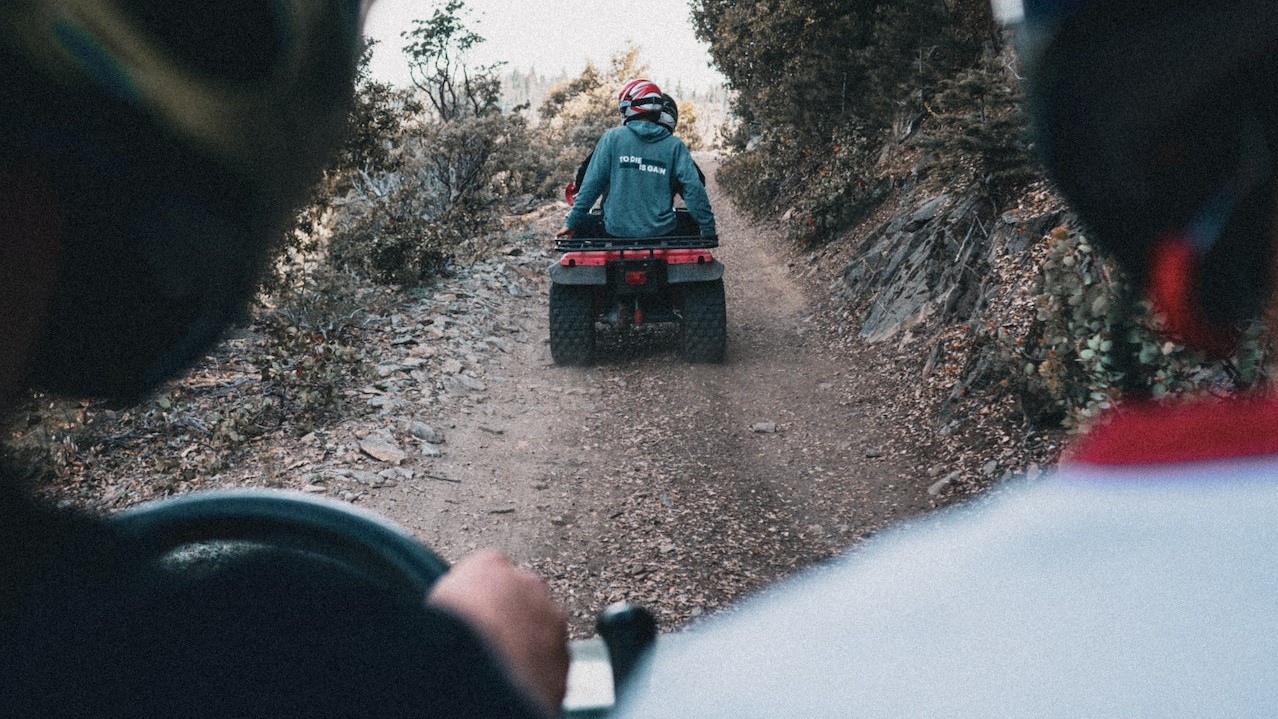The Equipment Theft (Prevention) Act 2023

All you need to know about the The Equipment Theft (Prevention) Act 2023.
We mentioned this prospect in an article back in May and now The Equipment Theft (Prevention) Act 2023 has received Royal Assent on 20th July 2023 and will come into force in 6 months’ time.
What the Act will mean?
The purpose of the Act is to prevent the theft of All-Terrain Vehicles (ATVs) such as quad bikes.
The Act allows the Secretary of State to make regulations requiring immobilisers and forensic marking to be fitted as standard to all new ATVs that meet the definition set out in the Act.
In addition, it provides the Secretary of State with power to make regulations on the recording of ATV sales (such as, potentially, a requirement to register ATVs covered by the Act on an appropriate property database).
The secondary legislation will define minimum standards for the immobilisers, forensic marking and the type of database which may be used.
The Act also provides a power for the Secretary of State to extend the legislation to other equipment designed or adapted primarily for use in agricultural or commercial settings, such as the construction sector.
Why was this legislation thought necessary?
The theft of agricultural and construction machinery has a significant impact on businesses and those who rely on this equipment for their livelihood. Thefts also have cause reputational damage to the manufacturer, as businesses and individuals want equipment that is protected against theft.
All-Terrain Vehicles (ATVs) in particular are desirable to thieves and are vulnerable largely due to a lack of security features. An estimated 900 -1200 quad bikes and ATVs are stolen in England and Wales each year.
Findings from the Home Office Commercial Victimisation Survey in 2018 showed only 22% of premises in the agriculture, forestry and fishing sector reported to protect their vehicles as a crime prevention measure.
The Figures Prompting the Change
After a fall during the pandemic, thefts are now on the increase and this trend is anticipated to continue. Whilst the latest Crime Survey for England and Wales data shows neighbourhood crime has fallen to 1.53 million incidents in year ending September 2022 (compared to 2.01m incidents in the year ending December 2019), the more up-to-date police recorded figures show neighbourhood crime (vehicle crime, burglary, robbery and theft from the person) increased by 16% in the year ending September 2022 compared to the previous year (from 651,137 offences to 753,552 offences), likely related to the easing of lockdown measures and increased footfall on the streets.
Latest data published by NFU Mutual in the Rural Crime Report 2022 shows thefts of quad bikes and ATVs cost their customers £2.2 million in 2021.
While this is almost 11% down on the previous year, the data warns of a recent upward trend. Almost half of quad bike and ATV thefts reported to NFU Mutual last year took place between September and December. The NFU Mutual’s report indicates the effects of recent supply chain issues are contributing to a rise in demand for both new and second-hand farm machinery. As waiting lists grow and market values increase, thieves are seeing quad bikes and ATVs as profitable commodities.
The role of the manufacturers in helping with prevention
In bringing forward this legislation in the House of Commons, Greg Smith MP consulted manufacturers who set out a clear preference of a legislative requirement specifying minimum standards, as opposed to taking action voluntarily. This legislation will provide a level playing field to manufacturers.
Immobilisers.
An immobiliser is a device that allows a vehicle to start only if the correct key or fob is inserted. This means that a quad bike, ATV or other vehicle fitted with an immobiliser is protected against hotwiring or imitation keys from would-be thieves. Importantly, it makes a stolen vehicle harder to sell on, making it less attractive to thieves.
The introduction of immobilisers in road vehicles had a significant impact on reducing the number of thefts. The proportion of road vehicles with immobilisers fitted increased from 3% to 98% between 1993 and 2013. Home Office research suggests the development and spread of immobilisers reduced vehicle thefts by between 20% and 45% across this period.
Farmers generally replace their quad bike or ATV every three to five years. Given this shorter lifespan compared to cars, it is likely the impact of immobilisers in reducing theft would be seen much quicker in quad bikes and ATVs than it was for cars. A 100% uptake will only be seen if it is a legislative requirement and is then subsequently installed by the dealership. The estimated cost of an immobiliser, including fitting, is estimated at approx. £150.
Forensic Marking
Forensic marking will enable police officers to easily identify a vehicle using a hand-held scanner or UV torch. Police forces already have this equipment, and many officers are issued with UV torches. The regulations made under this bill could, if the Secretary of State was so minded, specify the requirements which forensic marking must meet, basing the minimum requirements on the existing CESAR scheme requirements as the minimum standard.
The CESAR Scheme (Construction and Agriculture Equipment Security and Registration scheme) was established in 2008 and uses both visible and covert markings, with marked machinery registered on a database of ownership allowing for recovered machines to be returned more easily.
Police may use existing powers to seize and remove a vehicle if its true owner cannot be verified and the Bill specifies that those selling vehicles and equipment subject to the legislation must record specified information about the buyer. The secondary legislation could set out the details of when the information must be recorded, how long it must be kept, and what form the information must be kept in (for example, an online database). The estimated cost for forensically marking a vehicle or piece of machinery and recording this information is estimated at approx. £35.
The evidence of the impact for forensic marking is less certain, and mainly relates to domestic burglary. The Agricultural Engineers Association (AEA) is an official supporter of the CESAR scheme and they have reported that CESAR marking of agricultural machinery has contributed to a 60% decline in thefts since the scheme was launched.
Forensic marking and immobilisers are already commonplace in the construction sector; 90% of the CEA’s membership already voluntarily include these as standard on their machinery.
Why it’s important the theft of equipment such as quad bikes and ATVs is dealt with
Theft of quad bikes and ATVs has a significant impact on those who rely on them for their livelihood. The main users of quad bikes and ATVs are farmers, those involved in horticulture and land management such as estate owners and organisations such as the Forestry Commission, National Parks and the National Trust. For example, an ATV is an essential piece of equipment for a livestock farmer to check and feed livestock, as an alternative or compliment to a dog to move animals around, and more versatile and fuel-efficient than a larger vehicle for these tasks.
Recreational use of these types of vehicles is on the increase and although quad bikes and ATVs owned for leisure use are stolen less frequently, owners will benefit from these proposed additional security measures. Thefts have a reputational damage to the manufacturer, and a selling point would be their products are more secure.
How We Can Help
If you have any questions about the new Equipment Theft (Prevention) Act 2023 – or any other theft related cases – you can call us on 0161 477 1121 or email us if you have any questions about the criminal appeal process.


